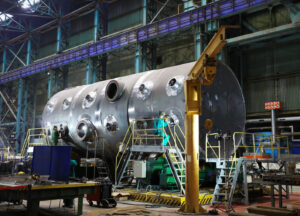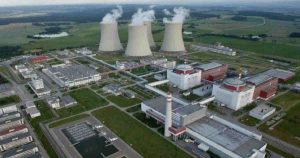Here’s a sight that will melt the heart of any post-blizzard commuter: Pavement that stays clear even as snow descends.A special concrete mix, studded with electricity-conducting ingredients, could help airports and other places run on time during inclement weather — such as the weekend blizzard that paralyzed the U.S. Northeast.So the Federal Aviation Administration is funding research to make this costly conductive concrete more affordable.The new formula being tested at University of Nebraska-Lincoln uses byproducts from the coal and steel industries to reduce costs 60 percent compared to earlier trials, according to professor of civil engineering Chris Tuan. The 200-square-foot patch has embedded steel rods attached to electrodes, he says, that connect to a 120-volt AC power source. The conductivity comes from “coke breeze,” a carbon byproduct of coal mining, and steel shavings that are considered industrial waste.“We keep it barely above freezing … somewhere around 40 degrees,” Tuan says, noting it doesn’t take much heat to make the slab impervious to snow. “It doesn’t get hot at all.”Some heated driveways and roads use a system of underground coils, or radiant heat, but Tuan says they provide uneven warming, with cold spots in-between the tubes.“When you use conducting concrete, the entire concrete heats up,” he says. “There is no cold area.” He adds that his system is virtually maintenance-free, and takes only about 13 watts of energy per square foot.While the concept seems perfect for airport runways, the FAA is more interested in using it for tarmacs. Runways offer plenty of space to run big snowplows.
The real bottleneck, Tuan says, occurs at the gates, where luggage and fuel carriers have to compete with smaller snow-clearing vehicles.The idea of pavement that conducts power has been around for at least two decades, so why hasn’t it caught on?Deborah D. L. Chung, an engineering professor at University at Buffalo – SUNY who has long studied conductive concrete, says cost is “the biggest hurdle” when it comes to adopting new materials.“A new concrete formulation needs very, very thorough field testing before contractors would dare to use it, because there are liability issues,” Chung says. “To get a new concrete to be accepted by contractors, it’s a long haul.”Roads and airports aren’t the only places conductive concrete can be useful. Because it can block electromagnetic waves, Chung says it can protect electrical equipment from lightning strikes or other big power surges. Tuan also sees a possibility for cellphone communication blocking in high-security buildings.He installed a system in 2003 for the 150-foot Roca Spur highway bridge in Lincoln. The five-year trial went well. He says de-icing the bridge during a three-day storm typically cost $250, many times less than the cost of plowing and chemicals, which can also decrease the life of concrete. But then the state turned the system off.“Nobody’s going to monitor the bridge or collect data,” Tuan says, “or turn the power on and off.”In the future, he wants to develop sensors and controls that would allow conductive concrete slabs to be automated, turning them on when storms approach and shutting them off when no longer needed.Tuan hopes to get the green light this spring for a second phase of the FAA project, which would involve a building prototype system in Atlantic City, N.J. He’s also seeking investment from China, where he installed two demonstration parking ramps in the notoriously icy city of Harbin.In the meantime, one of Tuan’s pilot systems is still around more than 10 years after he installed it: It’s the patio in his Nebraska backyard.




